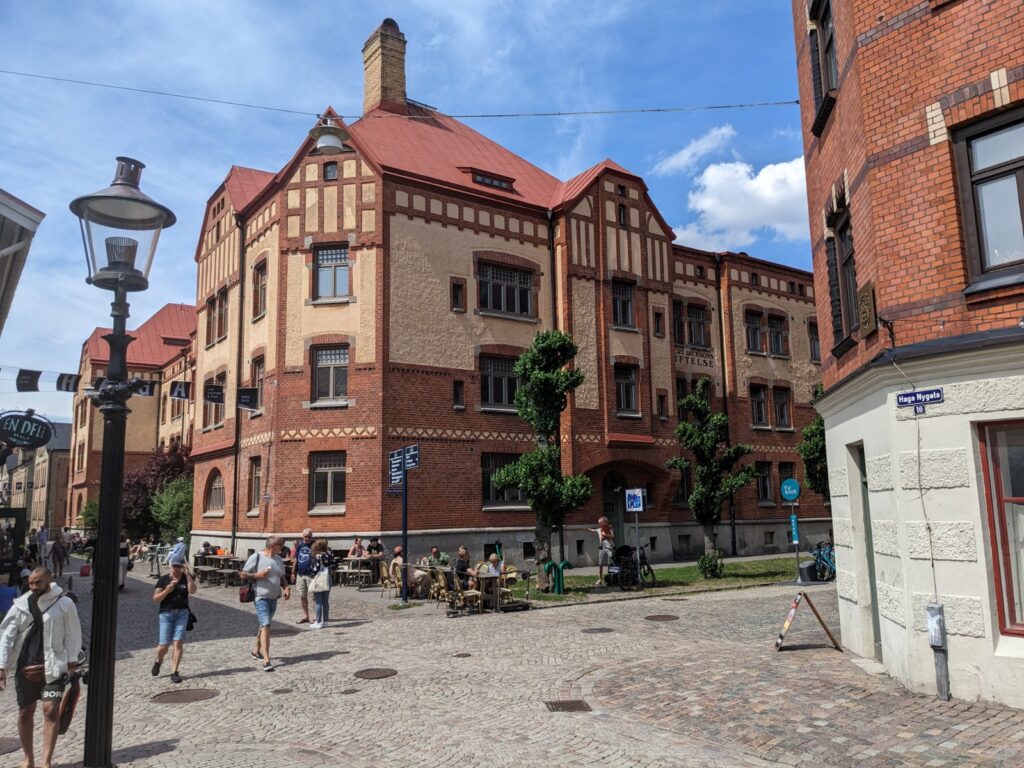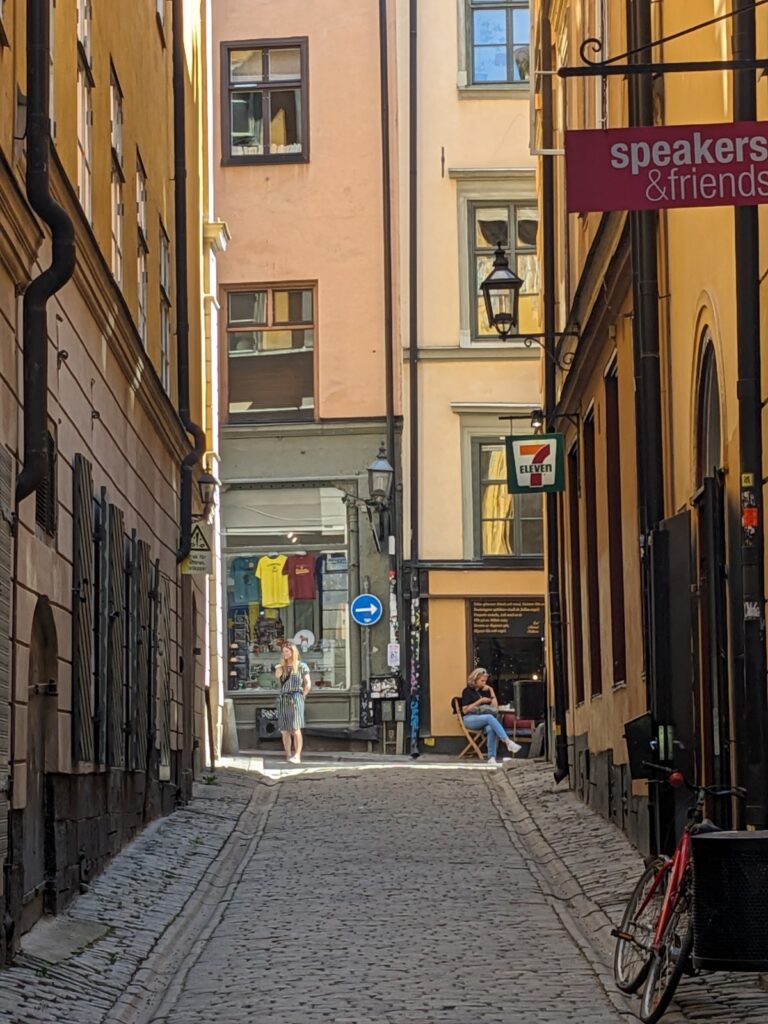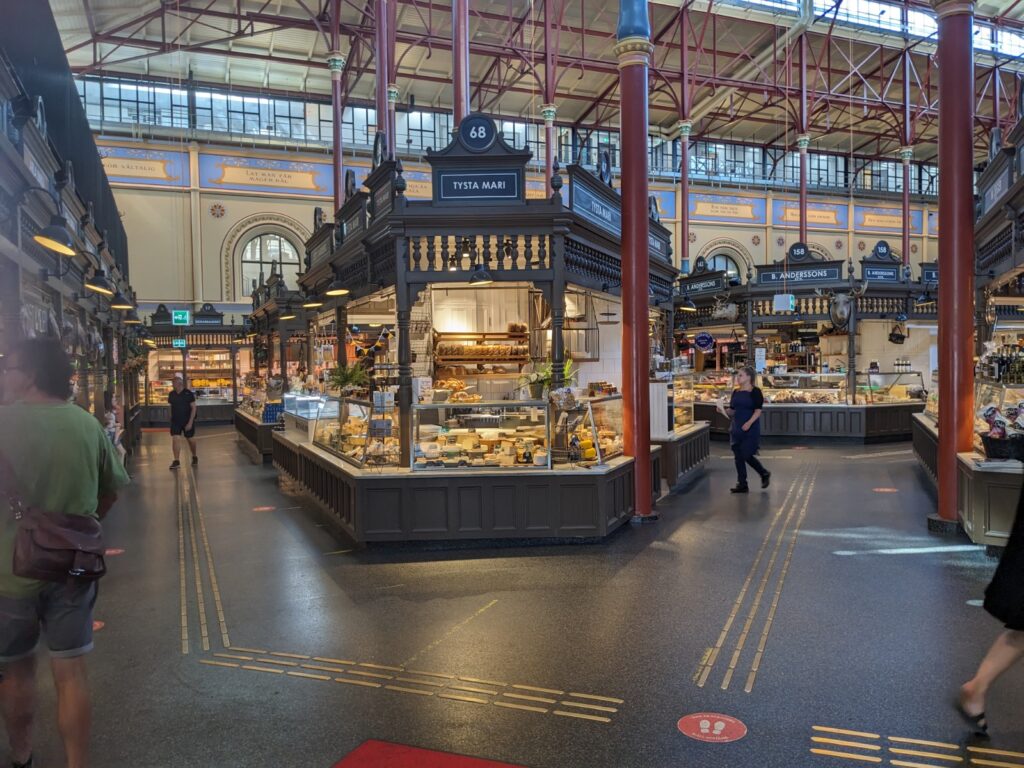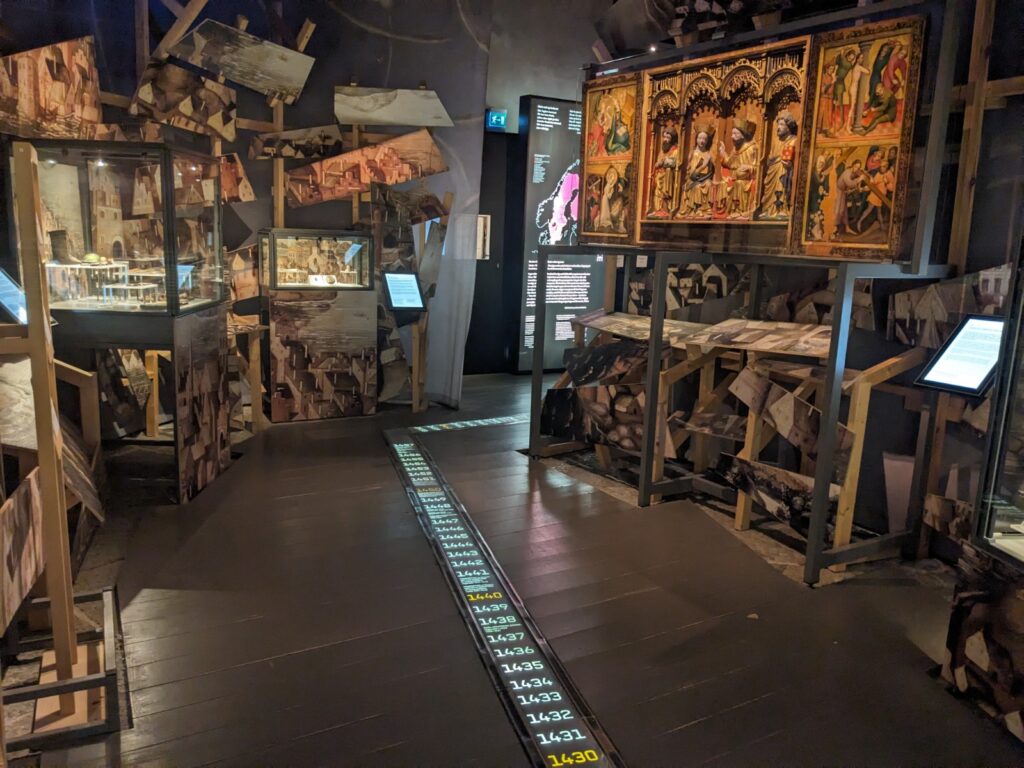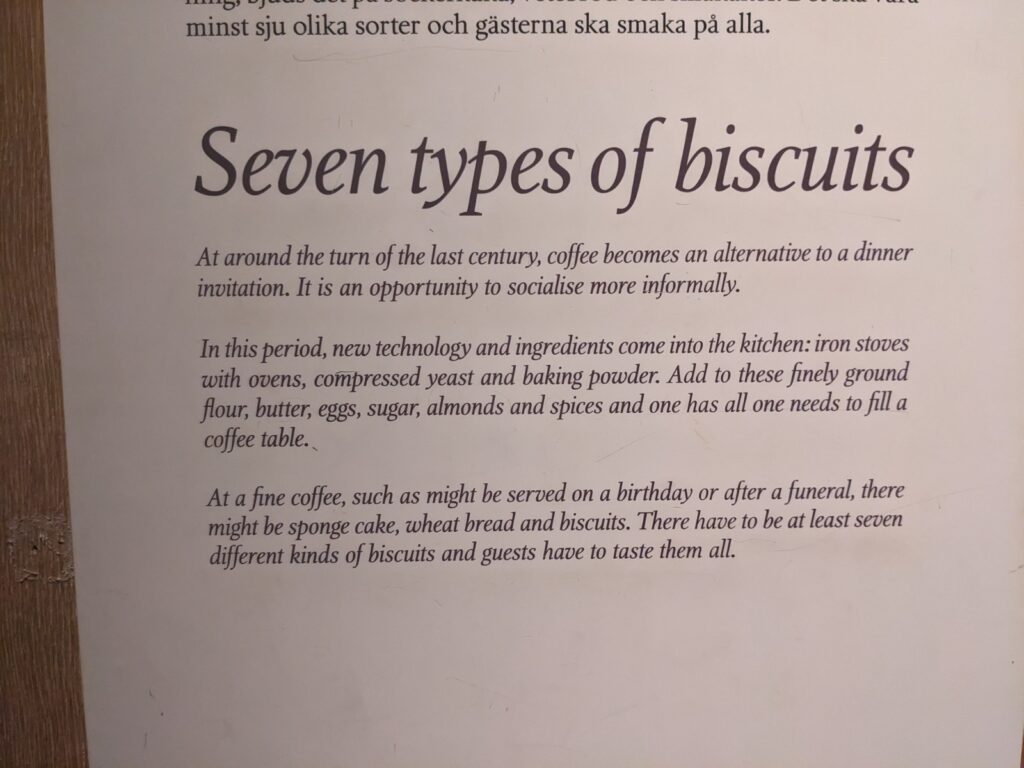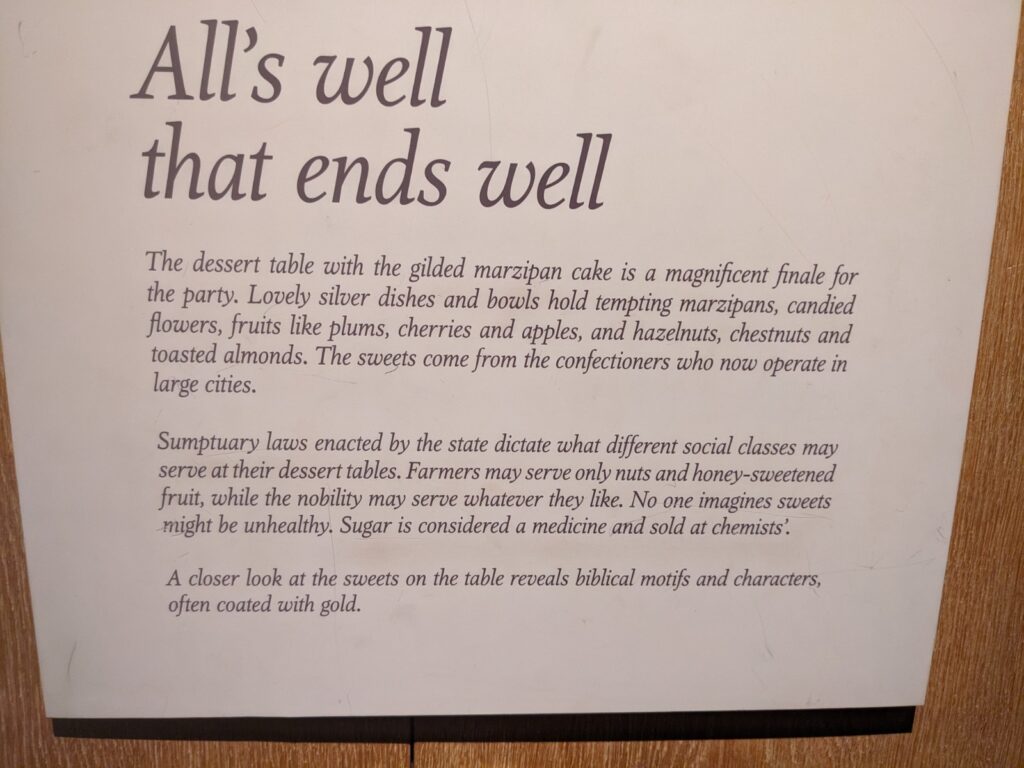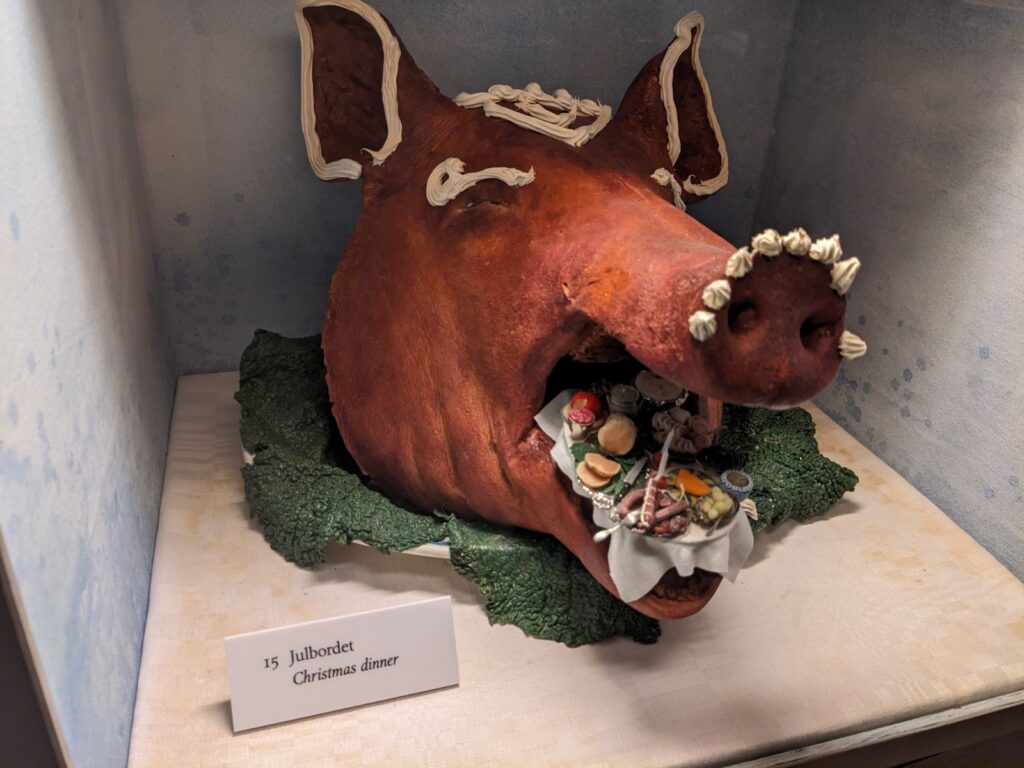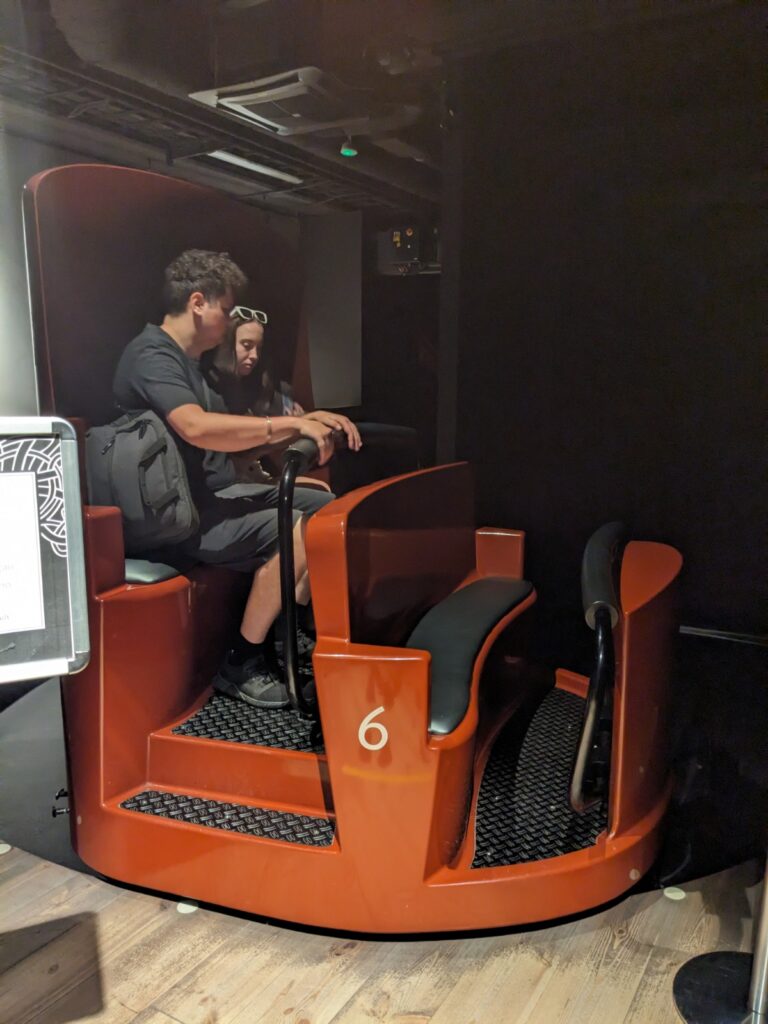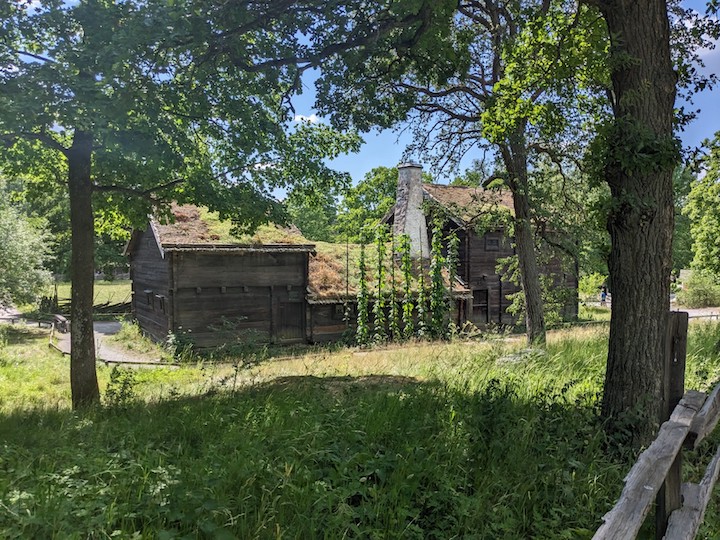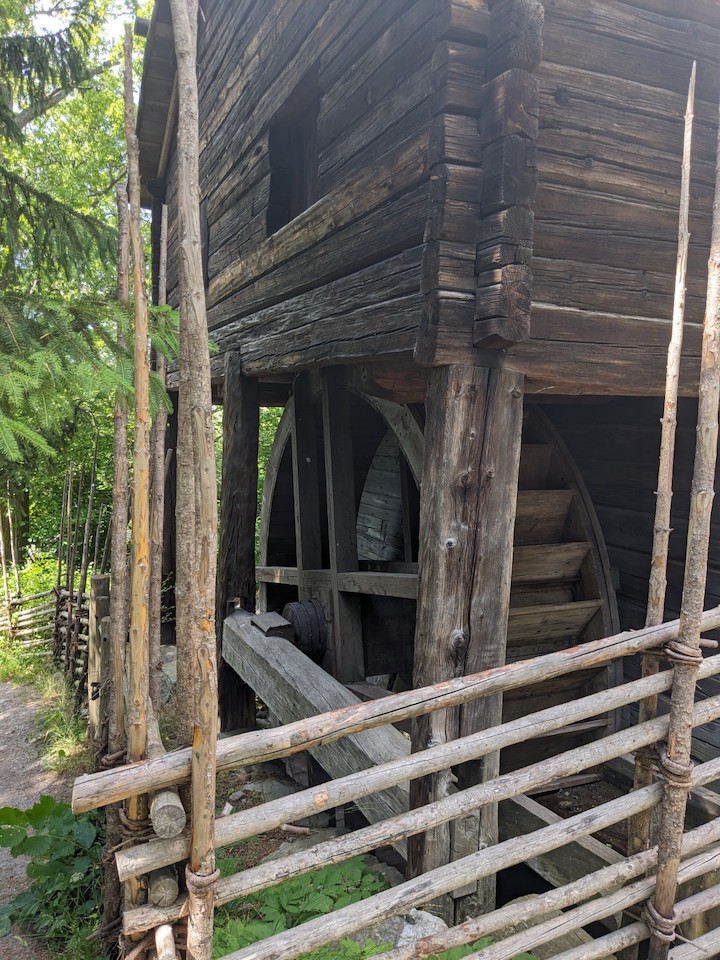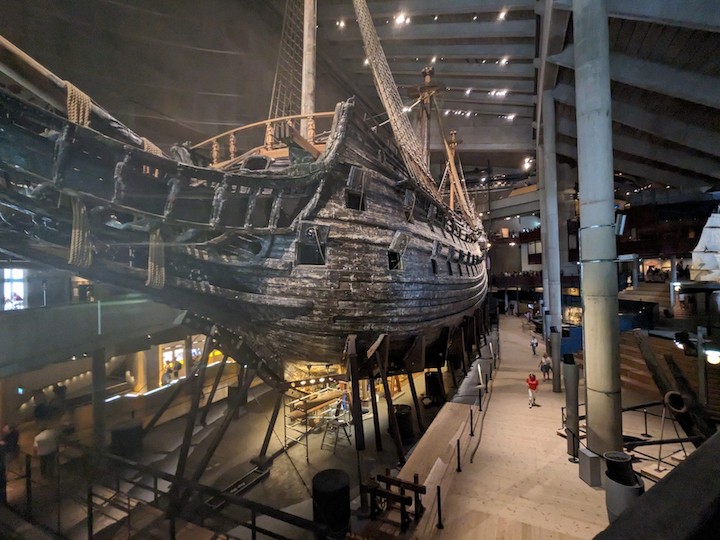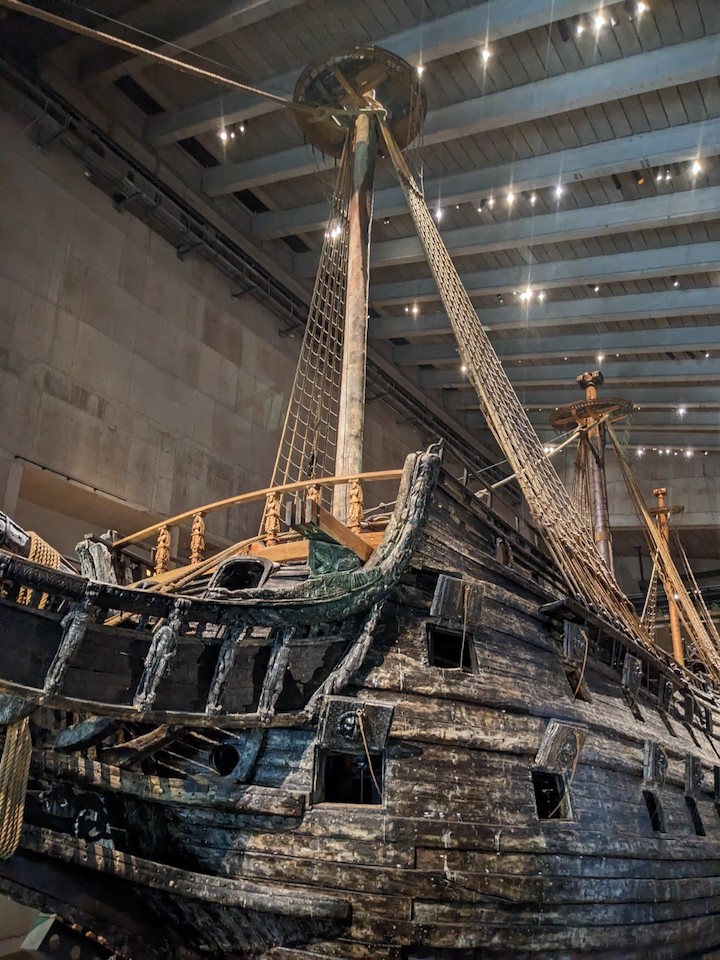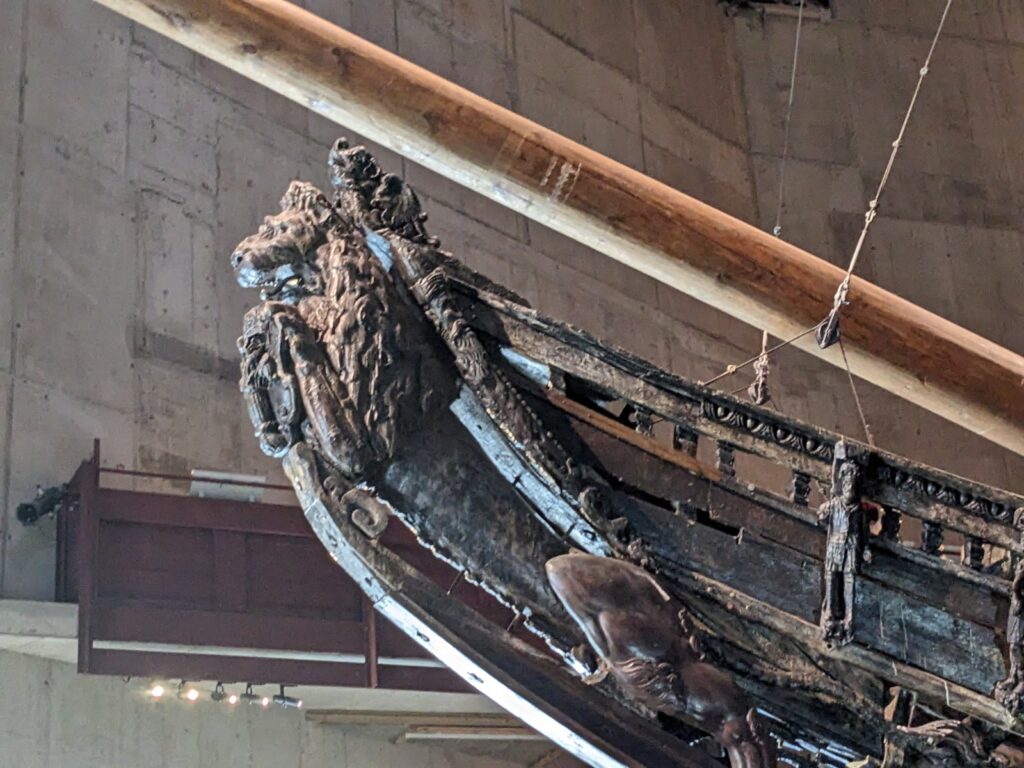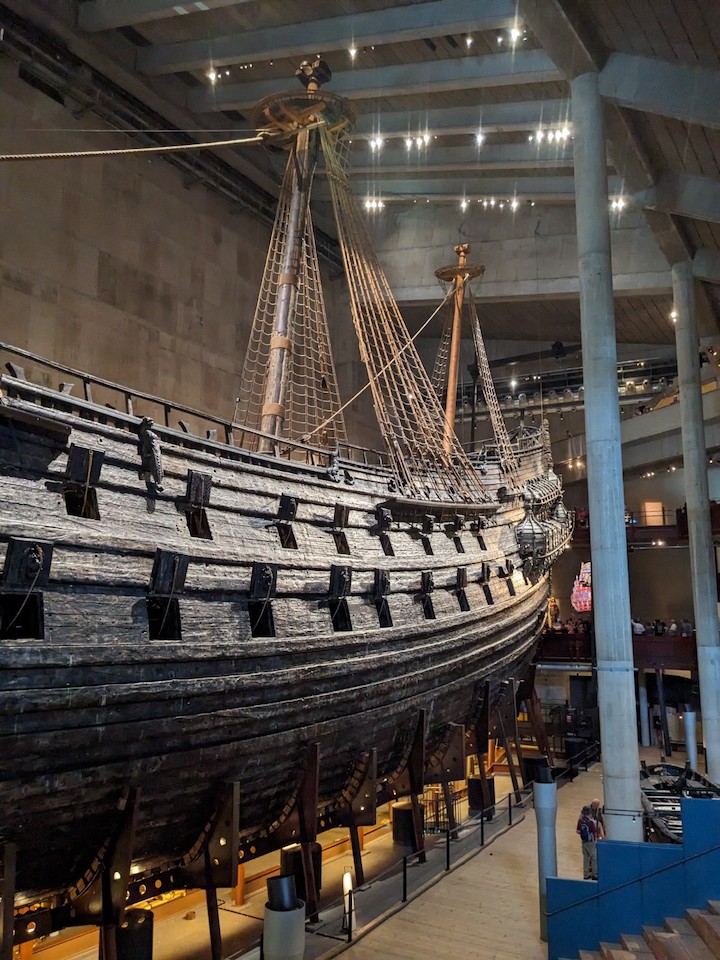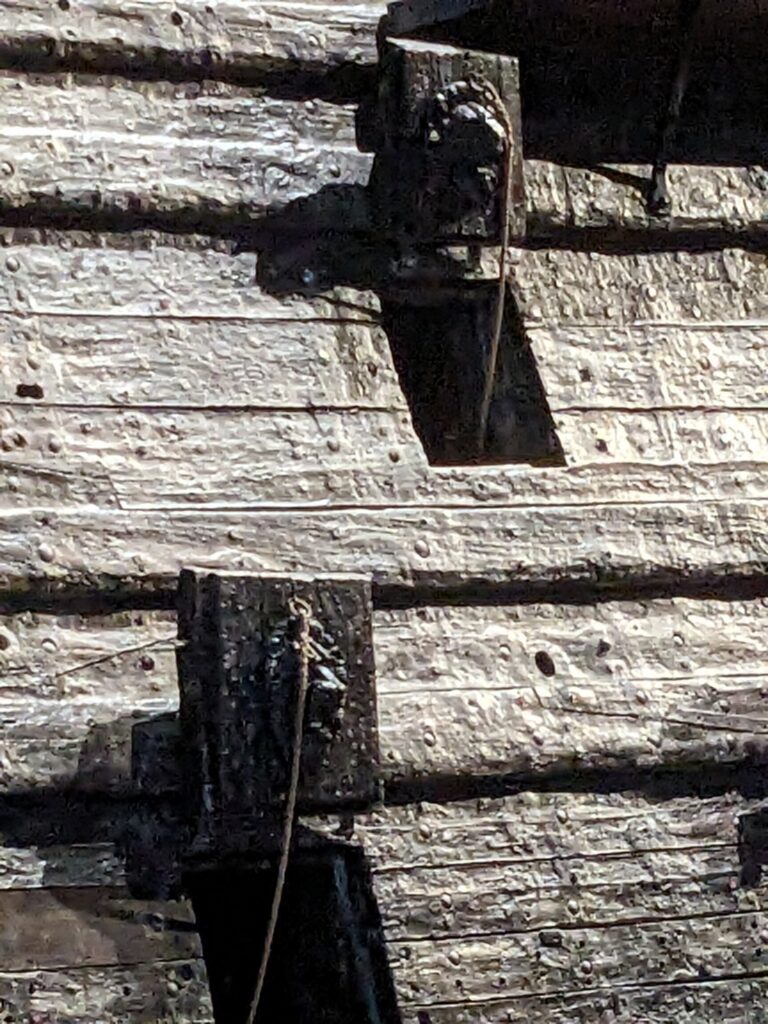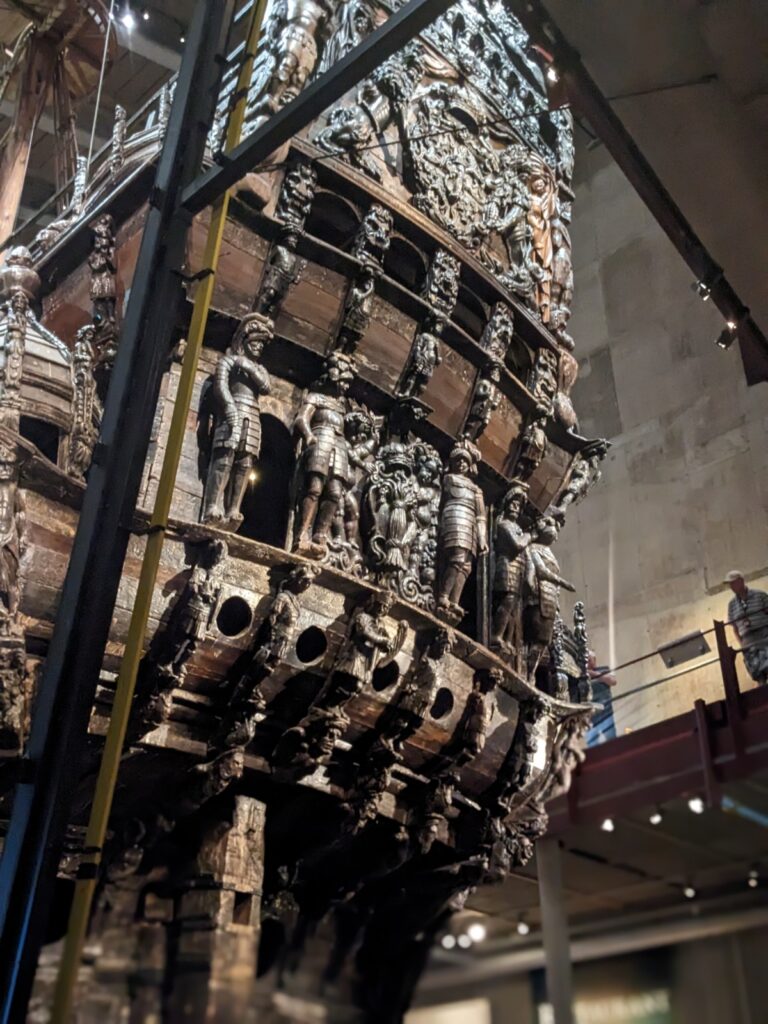July 1, 2023
Stockholm, Sweden
While Copenhagen was busy, and Gothenburg laid back, Stockholm is bustling. Still many areas that are pedestrian only, there are busy roads, traffic, and lots of street cars. Many, many more tourists than I have seen so far.
While the Swedes did not all speak the same perfectly fluent English as the Danes, it was close. Nowhere did I have any issue with communicating in English, though sometimes the accent was a bit heavy.
I once again went down-market to save money and stayed in a hostel called the Red Boat. It was, literally, a boat on a canal. Numerous hotels, hostels, and eateries were on boats on that canal. A half mile walk to anything of interest, it was at least quiet, if poorly ventilated. I’m done with hostels for the trip. Nothing but hotels from here on out.
A short walk from the Red Boat was an island with the Royal Palace, the Nobel Museum, and mostly narrow pedestrian streets with shops and restaurants catering exclusively to tourists, of which there were many. Its main attraction for me was the palace, the shade of its cobblestone streets (hot and muggy here), and the 7-Eleven where each afternoon I would stop on my way back to the hostel to buy bottled water which I guzzled greedily.
Culinary Mishmash.
I do so love upscale markets like the Public Market on Granville Island I visited last September in Vancouver. On my list for this trip was the Stermalm Saluhal market. Nowhere near as cavernous or bustling as the one in Vancouver, it still did not disappoint – except for the fact that my hostel room had no fridge, so I couldn’t really buy anything.
There was even a cheese monger selling Morbier, one of my favoritest cheeses.
The royal place was pretty cool, particularly as it is still occasionally in use for the King to receive foreign visitors or for banquets for Nobel laureates. Some stunning gorgeous wooden furniture.
The Stad Museet had an interesting way of presenting historical dioramas, with a timeline on the floor anchoring you in the appropriate year.
The Nordic Museum was a bit different. Housed in a magnificent building, the first floor was all about life in the arctic, including the Canadian, Icelandic, Norwegian, Swedish, Finnish, and Russian Arctic. Moderately interesting, I suppose. The second floor was more cultural.
Silly graduation hats are, apparently, not strictly the purview of the Danes.
There was one hallway that dealt with eating, entertaining, and customs related thereto. This had some humorous entries.
I fear that visitors to my home have sometimes had to make do with less than seven kinds of biscuits.
If Washington state would simply pass common sense sumptuary laws, dessert wouldn’t be the anarchy it is today.
I’ve got…nothing.
The Viking Museum was certainly something. No doubt about that. It might have have better been called the Viking Experience, or Viking Attraction. The main floor was a collection of reproduction artifacts and dioramas that repeated a small subset of what every other Viking museum in Scandinavia has. But the best part was the first floor. It had what every academically curated museum needs to have. A ride.
Yes, friends, a Viking ride! It twisted and turned its way through dark tunnels where lights would illuminate (as lights are wont to do) small sets with voiceovers that told the story of Harrold. Crashing noises and thunderclaps would add drama at just the right moments for storms and battles!
Harrold was a farmer, though apparently a bit of a loser. His wife, Astrid, finally told him to get his shit together and bring home three barrels of silver, lest they have to sell their daughter, Ingrid. Ingrid cried and begged her father to bring home three barrels of silver so she would not have to be sold. Oh, poor Astrid and Ingrid to have such a loser husband and father!
So, Harrold, beset by these unreasonable women in his life, borrowed leather and slaves from his cousin (such a loser!) and went forth to some foreign land the location of which was not entirely clear, but maybe Germany. He sold the leather and slaves for three barrels of silver which was fortuitous, as that is what Astrid said he should bring back. Ingrid would be saved and Astrid would finally leave him alone! But that wouldn’t make much of a story for a ride, so Harrold was set upon by brigands and thieves and lost all his silver! What was Harrold to do?
So he joined some Danish Vikings and spent two years pillaging and plundering (raping being not a socially acceptable part of a story for a modern museum ride) and earned not three, not four, not five, but six barrels of silver!
He made his was back to Astrid and Ingrid and threw a great feast and lived happily ever after, the moral apparently being that even loser farmers with a nagging wife can have a happy life if they are willing to leave their family for years to set out pillaging and plundering. Though I admit I may have misconstrued part of that.
I fear I may have missed some of historic fine points of the ride as I laughed my way through the whole thing, but I can certainly say it was at least as historically accurate as the recent TV show Vikings.
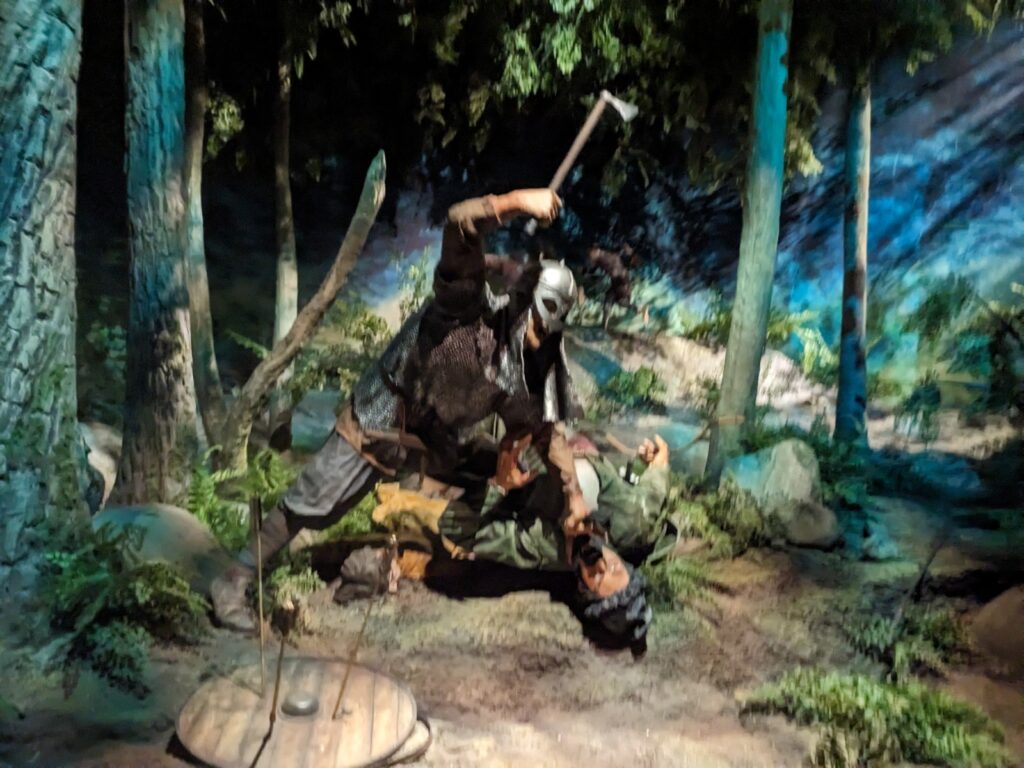
Brigands Set Upon the Loser Farmer Harrold
Built on many acres with a hill in the middle, the lower part is restaurants and shops, with the upper part being recreations of farms and villages with most of the buildings having been relocated from other parts of Sweden. Farms would often have live animals and some were hosted by a cultural interpreter in period costume. While at first it seemed a little campy, it turned out to be rather cool.
The gem of my time in Stockholm was, without doubt, the Vasa Museum.
Built in 1628, the Vasa was an enormous warship built to help Sweden in its war with Poland and Lithuania. Two gun decks held 58 guns and each port for the guns held a carved and painted lion to further intimidate the enemy. She launched in 1628 and sailed only about 1.4km before listing to one side and sinking in Stockholm harbor. A far from auspicious fate for such a grand vessel, but the cold water and mud preserved her nicely until she was floated, largely intact, in 1961. She is 98% original and truly magnificent.
As a warship, her design was clearly lacking. As a miraculously preserved 400 year old piece of craftsmanship, she is astounding.
Simply stunning.


